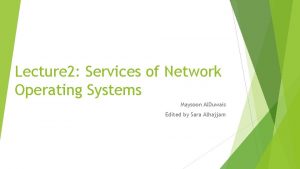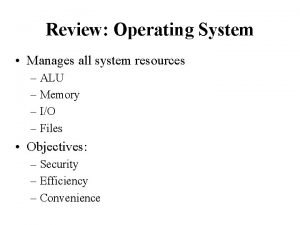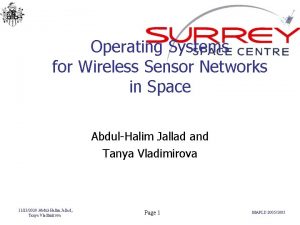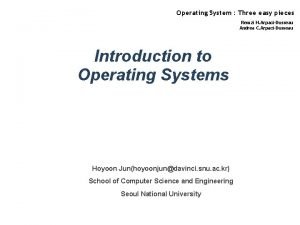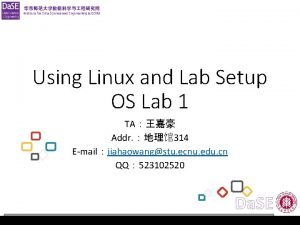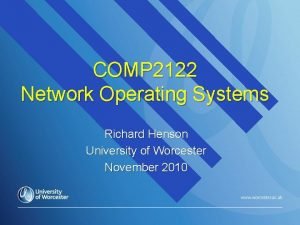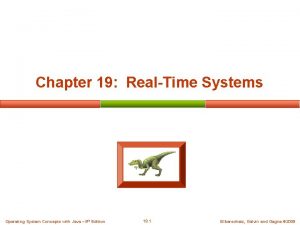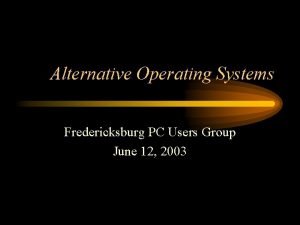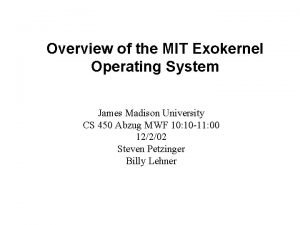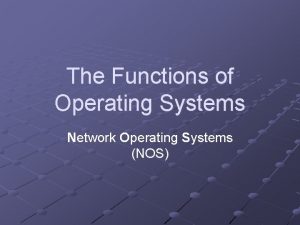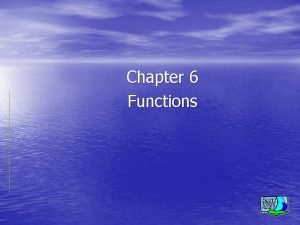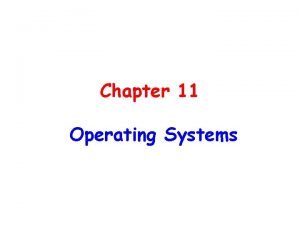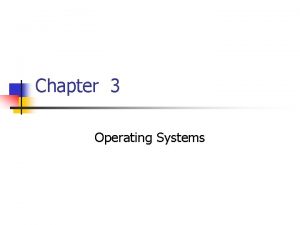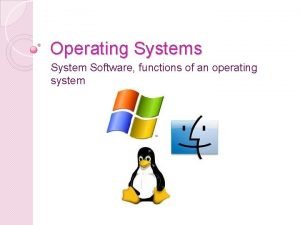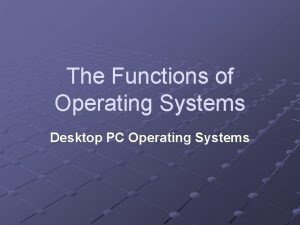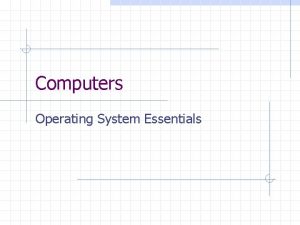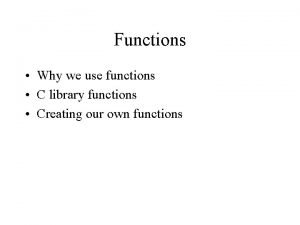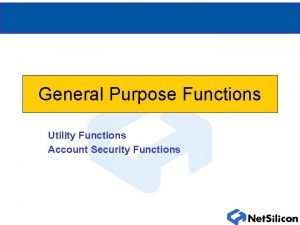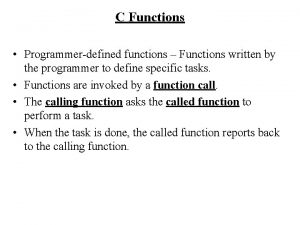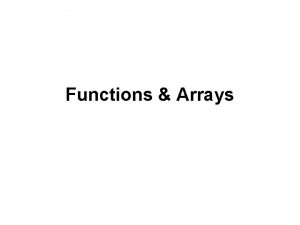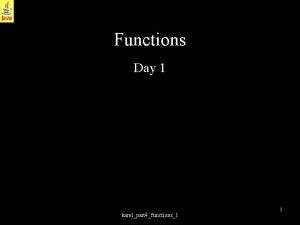Operating Systems Chapter 4 Functions of Operating Systems




















- Slides: 20

Operating Systems Chapter 4

Functions of Operating Systems • • Oversee operation of computer Store and retrieve files Schedule programs for execution Coordinate the execution of programs • Provide an interface to the user to access machine functions

Evolution of Shared Computing • Manual jobs • Batch processing • Interactive processing – Requires real-time processing • Time-sharing/Multitasking – Implemented by Multiprogramming • Multiprocessor machines

Types of Software • Application software – Performs specific tasks for users • System software – Provides infrastructure for application software – Consists of operating system and utility software

Software classification

Operating System Components • Shell: Communicates with users – Text based – Graphical user interface (GUI) • Kernel: Performs basic required functions – File manager • Where files are on the disk, clusters – Device drivers • Interface with physical devices – Memory manager – Scheduler and dispatcher

Memory Manager • Allocates space in main memory • May create the illusion that the machine has more memory than it actually does (virtual memory) by playing a “shell game” in which blocks of data (pages) are shifted back and forth between main memory and mass storage

Getting it Started (Bootstrapping) • Bootstrap: Program in ROM (example of firmware) – Run by the CPU when power is turned on – Transfers operating system from mass storage to main memory – Executes jump to operating system

The booting process BIOS – Basic I/O System – software utilities for fundamental I/O activities stored on the ROM along with the bootstrap program

Processes • Process: The activity of executing a program • Process State: Current status of the activity – Program counter – General purpose registers – Related portion of main memory

Process Administration • Scheduler: Adds new processes to the process table and removes completed processes from the process table • Dispatcher: Controls the allocation of time slices to the processes in the process table – The end of a time slice is signaled by an interrupt.

Time-sharing between process A and process B See Windows Task Manager for an example

Race Condition • When two processes want to use a common shared resource a “race condition” may result and cause undesirable results • Example: Two processes writing to the same location in memory (one to subtract 10, one to add 20) Process 1 Process 2 Load value from memory to register Add 20 Store register back to memory Load value from memory to register Subtract 10 Store register back to memory

Attempt to fix: use register 0 as “in use” flag Process 1 Process 2 If register 0 is 0 Set register 0 to 1 Load value from memory to register Add 20 Store register back to memory Set register 0 to 0 Else wait until register 0 is 0 If register 0 is 0 Set register 0 to 1 Load value from memory to register Subtract 10 Store register back to memory Set register 0 to 0 Else wait until register 0 is 0 Will this fix the problem?

Handling Competition for Resources • Semaphore: A “control flag” • Critical Region: A group of instructions that should be executed by only one process at a time • Mutual exclusion: Requirement for proper implementation of a critical region

Solution: Semaphore In this example we use an uninterruptible Test and Set Instruction Process 1 If register 0 is 0 set register 0 to 1 Load value from memory to register Add 20 Store register back to memory Set register 0 to 0 Else wait until register 0 is 0 Process 2 If register 0 is 0 set register 0 to 1 Load value from memory to register Subtract 10 Store register back to memory Set register 0 to 0 Else wait until register 0 is 0

Deadlock • Processes block each other from continuing • Conditions required for deadlock 1. Competition for non-sharable resources 2. Resources requested on a partial basis 3. An allocated resource can not be forcibly retrieved

A deadlock resulting from competition for nonshareable railroad intersections

Security • Attacks from outside – Problems • System errors • Insecure passwords • Sniffing software – Counter measures • Auditing software • Firewalls, scanners

Security (continued) • Attacks from within – Problem: System errors – Counter measures: patches, virtual machine – Problem: Unruly processes – Counter measures: Control process activities via privileged modes and privileged instructions
 What is os
What is os Different types of network operating system
Different types of network operating system Operating system manages
Operating system manages Absolute value as a piecewise function
Absolute value as a piecewise function Evaluating functions and operations on functions
Evaluating functions and operations on functions Evaluating functions and operations on functions
Evaluating functions and operations on functions Evolution of operating systems
Evolution of operating systems Components of an operating system
Components of an operating system Components of operating system
Components of operating system Wsn operating systems
Wsn operating systems Remzi arpaci-dusseau
Remzi arpaci-dusseau Operating system lab
Operating system lab Introduction to operating systems
Introduction to operating systems What is modern operating system
What is modern operating system Components of operating system
Components of operating system Design issues of distributed operating system
Design issues of distributed operating system Early operating systems
Early operating systems Real-time operating systems
Real-time operating systems Can we make operating systems reliable and secure
Can we make operating systems reliable and secure Alternative operating systems
Alternative operating systems Exo kernel
Exo kernel

